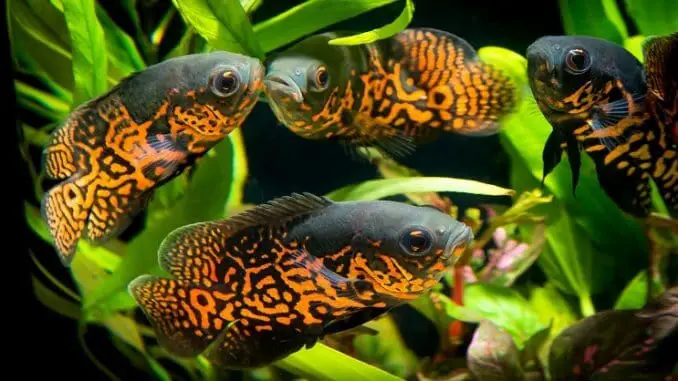
Over 12.5 million households keep freshwater fish in the US. Freshwater fish account for the largest proportion of pets owned across America, so it’s no surprise that these fish are the top choice of pet for many people.
Most of the species that we’ll look at here are easy to care for, will bring beauty and color to your homes, and are very relaxing to watch.
Keeping freshwater fish also has many health benefits, such as reducing stress and lowering your blood pressure and heart rate.
With all that said, most people who start off in the fishkeeping hobby get hooked very quickly, mainly because fish are so beautiful to watch and have many characteristics and personalities all of their own.
In this article, we’re going to take a look at the most popular species available in the freshwater aquarium industry today.
TABLE OF CONTENTS
Neon Tetra
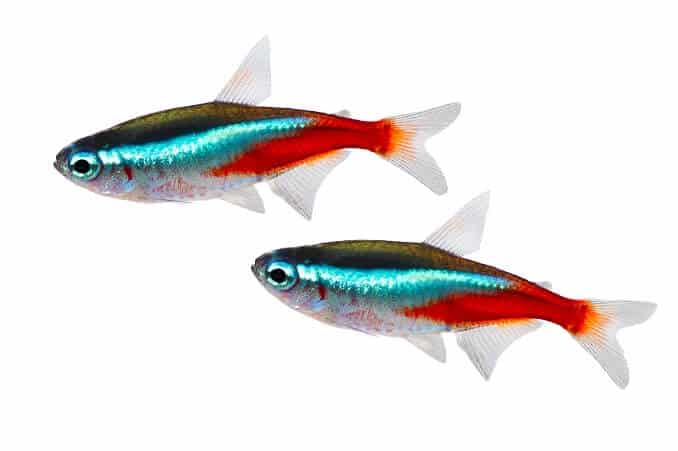
Neon tetras are a small, easy-to-care-for species. This popular aquarium species is often one of the first fish a beginner aquarist will buy.
Tetras reach around 2.2cm in length and like to be kept in groups. They are a great choice for small community aquariums due to their peaceful temperament.
Neon tetras come in bright colors and have an iridescent blue horizontal strip across their bodies (so they are visible to each other in dark water natural habitat).
These fish require soft, acidic water with tropical temperatures, and will eat most foods. Neon tetras are omnivores, so they’ll feed on brine shrimp, worms, and insects as well as plants.
Due to their extreme popularity, over 1.5 million neon tetras are imported to the US each month!
Guppies
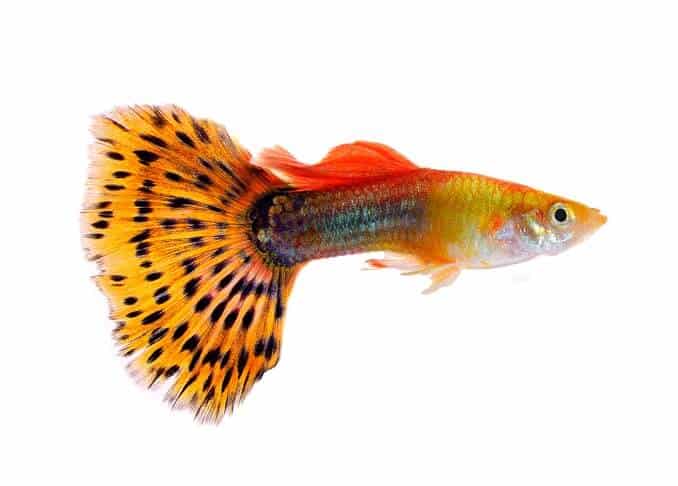
Guppies are colorful and lively fish that are able to adapt to a variety of water conditions, which is one of the reasons they are so popular. They are also very easy to care for. You should keep guppies in sets of threes, and a good guide for the tank size is 1 gallon of water per guppy.
Males are much more colorful and vibrant than females, so if you’re not looking to breed, you may want to just keep males.
The ideal water temperature for guppies is 50°F–84°F (10–29°C), but the most important factor is that the temperature is kept consistent.
Guppies should be fed a mixture of plant and animal-based foods. You might even consider making your own fish food – it’s easier than it sounds.
Oscar
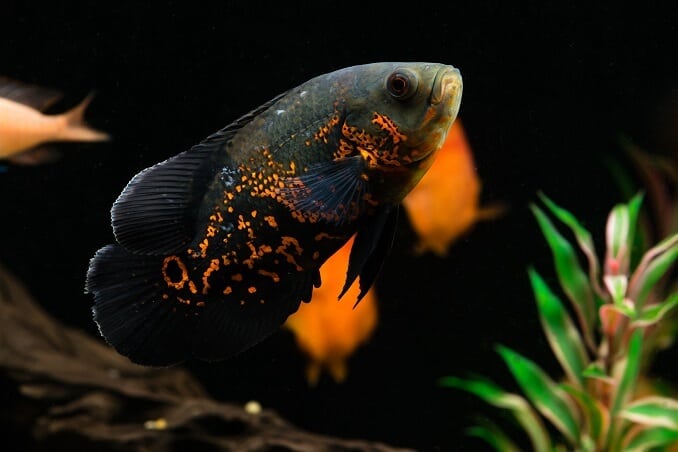
Oscar fish are thought to be one of the most intelligent aquarium fish available and are one of the few species that can be trained to do tricks.
Oscars, however, are not community fish. They should be kept in species-only tanks, and they can grow very large, very quickly.
They require a lot more maintenance than other fish, due to their carnivorous nature and the amount of waste they create.
On the positive side, they are one of the few species you can hand feed. Oscars will often eat food from between your fingers. Oscars thrive when kept in pairs, or groups of 5+, and should be housed together from a young age.
Mollies
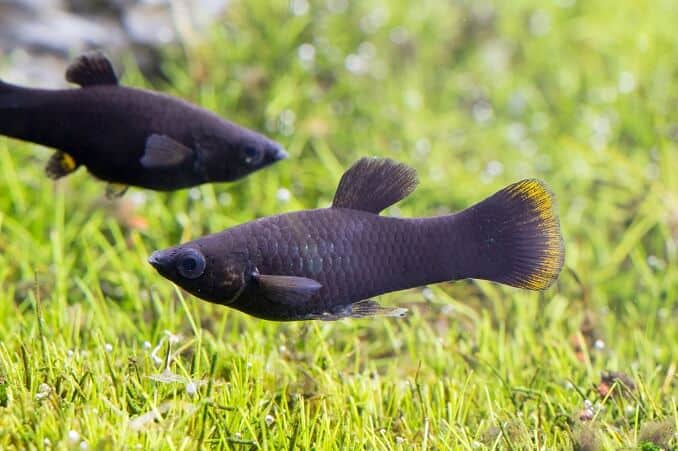
Molly fish are small, peaceful fish that grow to around 3-4 inches and adapt well to a variety of water conditions.
Their ideal tank conditions include a minimum tank size of 20 gallons and warm water with a pH between 7.0–7.8.
Mollies are omnivorous and will require a diet of both plant and animal food.
Interestingly, they are livebearers, meaning they give birth to their young live, rather than lay eggs. Mollies are very easy to care for, but they breed very easily, so if you’re a beginner you might want to keep just a single sex.
Zebra Danios
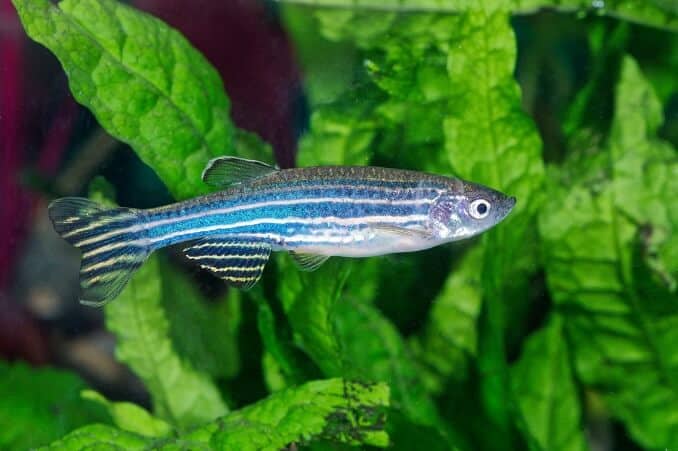
Zebra danios make the perfect beginner fish. They are very easy to care for and can grow up to 5–7cm.
They should be kept in at least a 10-gallon tank, in groups of at least 5. Danios are schooling fish and will become stressed if their numbers are too low.
They are not fussy eaters and will eat most foods. The healthiest options for them would be lots of worms, insects, and crustaceans to mimic their natural diet. However, a good quality flake will also work with a supplement of frozen or live food.
Danios are also known to jump, so you may want to keep your tank covered!
Platies
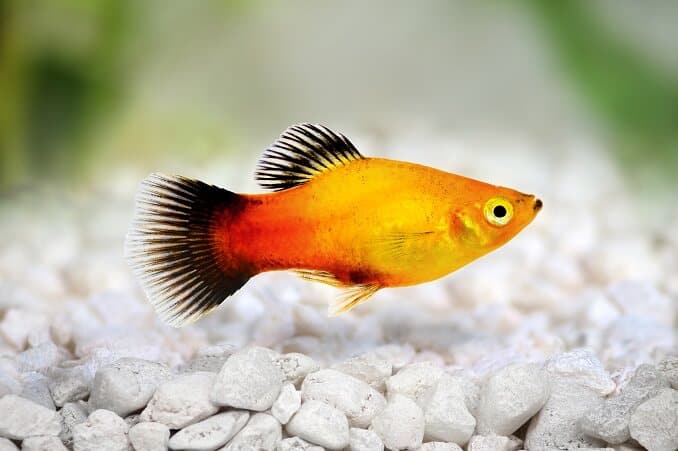
Platy fish come in almost every color imaginable and are very easy to care for – just two of the reasons why they are so popular.
They are a great community fish. They’re very peaceful and get along well with guppies and mollies.
Although small, platies are very active and love being in groups. A 10-gallon tank is large enough for 5 fish.
While they are omnivorous, they require much more herbivorous food than meats. Ideally, they need a good mix of plant-based food and proteins.
Cherry Barb
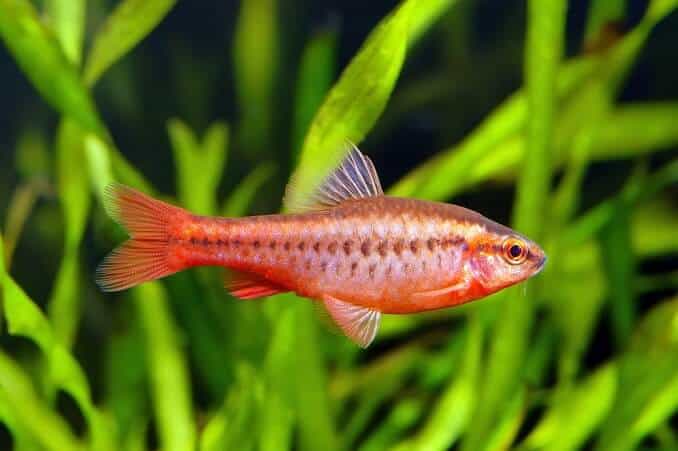
Cherry barbs get their name from the color the male turns when it is spawning. Usually, they are silver/black with a golden lateral line.
They are peaceful fish that grow to around 2 inches in length, and they require a minimum tank size of 25 gallons. Cherry barbs are omnivorous and will eat most types of food including live, fresh, frozen, and flake foods.
They are easy to care for and can be kept in community tanks with open space to swim and planted areas where they can hide.
Pearl Gourami
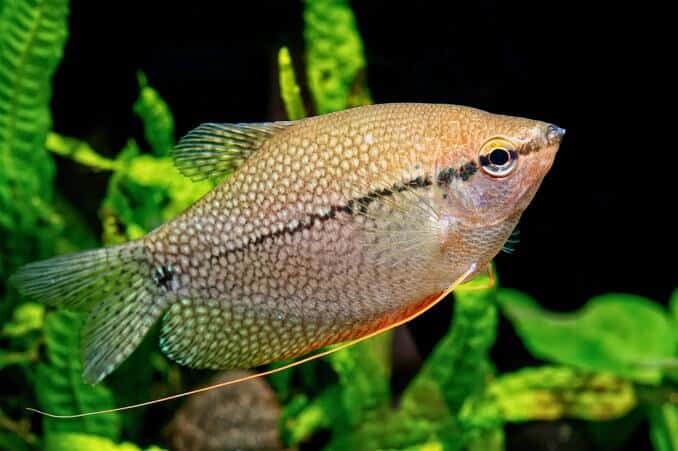
The pearl gourami is a relatively large, peaceful fish and is one of the easiest to keep.
The minimum tank size for this species is 30 gallons, which should contain plenty of hiding places, dark substrate, and low lighting.
They can be kept with other fish of a similar size and temperament; however, you should not keep them with aggressive fish.
Pearl gouramis are omnivorous and should be fed algae-based foods and meaty foods.
They are well known for eating Hydra, a tiny pest that has tentacles with venom, so pearl gouramis make a great solution if you have a hydra problem.
Swordtails
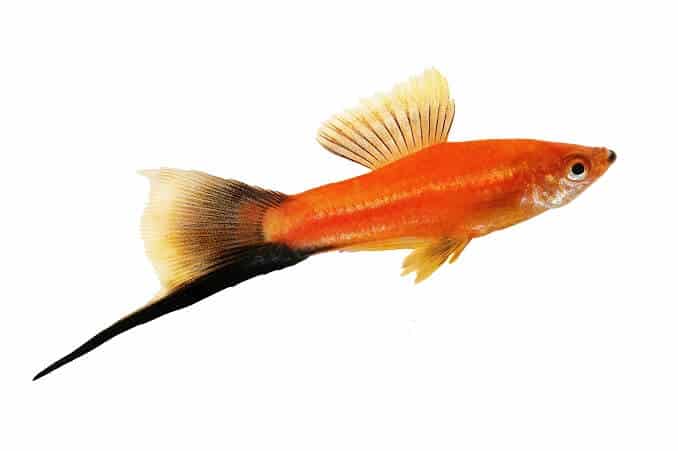
Swordtails are similar in shape to platies and guppy fish, but with slightly bulkier bodies and a sword-shaped extension of their fins.
There are many different color variations available and they are quite hardy, which makes them a perfect species for the beginner aquarist.
Swordtails are usually peaceful, yet lively. They thrive in community tanks and like to swim in loosely grouped schools.
They breed easily, and if you do decide to breed them, you should keep them away from their parents. Swordtail parents will often eat their fry.
Discus
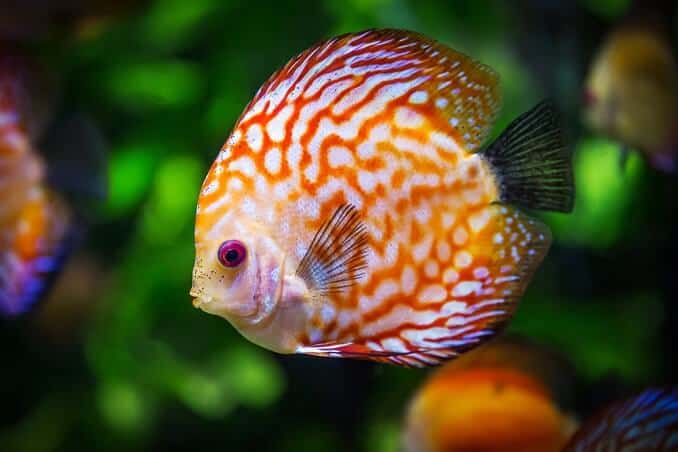
Discus fish are beautiful and graceful fish that can grow to be quite large and therefore require a larger tank. These fish need a minimum tank size of 25 gallons.
Discus fish are not recommended for beginners, and instead should only be kept by experienced aquarists.
They can be housed with other fish that require the same water conditions, as long as they are not aggressive.
Discus fish will eat a variety of foods, but they are carnivorous in nature. The best diet for these fish consists of beef heart and blood worms supplemented with flakes to provide vitamins and minerals.
Killifish
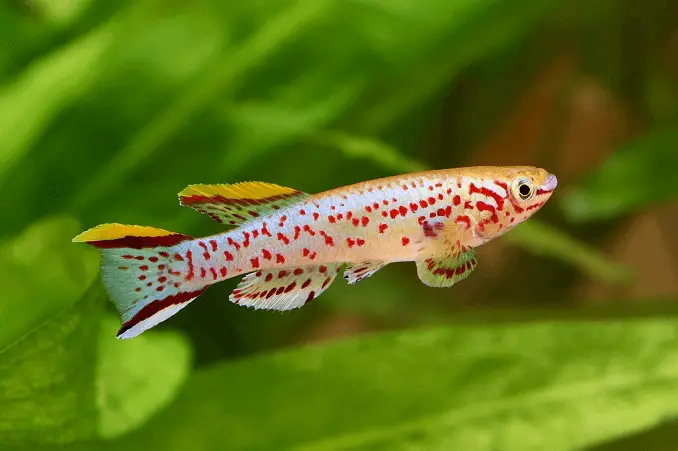
Killifish come in a wide variety of bright colors. They are extremely hardy fish, and there are over 700 species of killies – a breed to suit almost every tank condition.
These fish are generally peaceful and do well in community tanks with other small, non-aggressive fish. Make sure to keep just one male in each tank though, as they can be aggressive towards each other.
Killifish are very easy to breed and are either annual or non-annual breeders. In the wild, annual killifish lay their eggs in temporary bodies of water which dry up for months at a time. When they refill, the fry hatch.
Most killifish are carnivores and therefore enjoy a diet of insect larvae, worms, and crustaceans.
Bettas
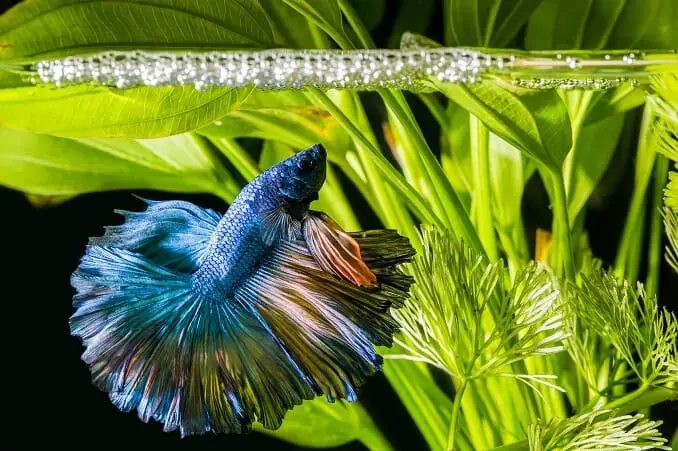
Betta fish are another extremely popular freshwater aquarium fish because they are vibrantly colored and easy to care for.
Male bettas are notoriously aggressive towards other males. Therefore, only one male betta should be kept in each aquarium. They can be kept with other peaceful fish.
Bettas require an omnivorous diet of both plant and animal foods.
They grow to a maximum size of 3 inches. Although you can often see bettas in small ornamental tanks, they should be kept in larger tanks.
Interestingly, bettas are able to breathe the air outside of the water due to a special organ called a labyrinth!
Plecostomus
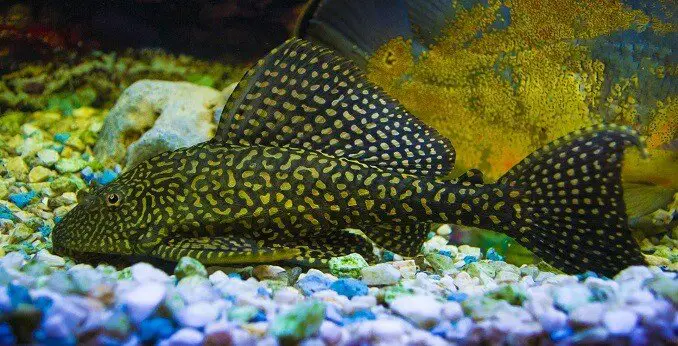
Plecos are a family of catfish that have heavy armored plates on their bodies, and sucker-shaped mouths to feed on algae and other food on the bottom.
While some species are happy eating algae, wafers, and flakes, others will need meaty food such as frozen brine shrimp.
Breeding plecos is extremely difficult, and only a small number of aquarists have managed to breed them.
Plecos can live for 20 years, sometimes longer if cared for correctly. Plecos can jump too – so keep a lid on your tank!
These fish can be housed with many different species, but avoid keeping them with fat or flat-bodied fish such as goldfish, as the plecos may suck on them.
Rainbowfish
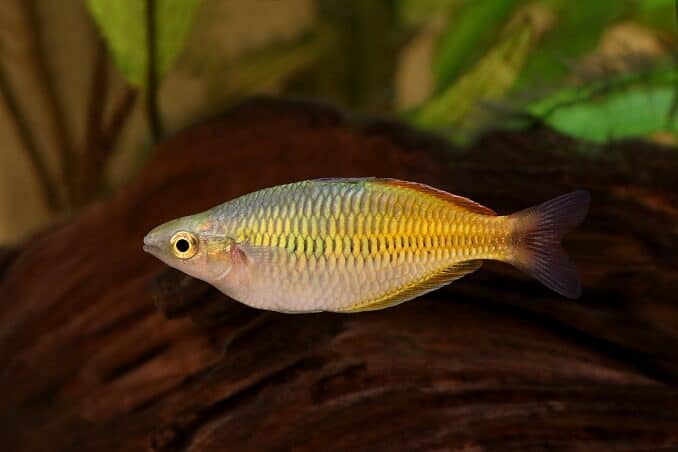
Rainbowfish originate from Australia and Southeast Asia. They are peaceful, schooling fish that can grow up to 6 inches long.
Rainbowfish are one of the least common fish on this list, which may be because their colors only begin to show as they enter adulthood.
However, if these fish are given the right care, they’ll display stunning and vibrant colors after a few short years.
Rainbowfish get along well with other upper-level schooling fish such as danios, bards, and larger tetras.
Corydoras Catfish
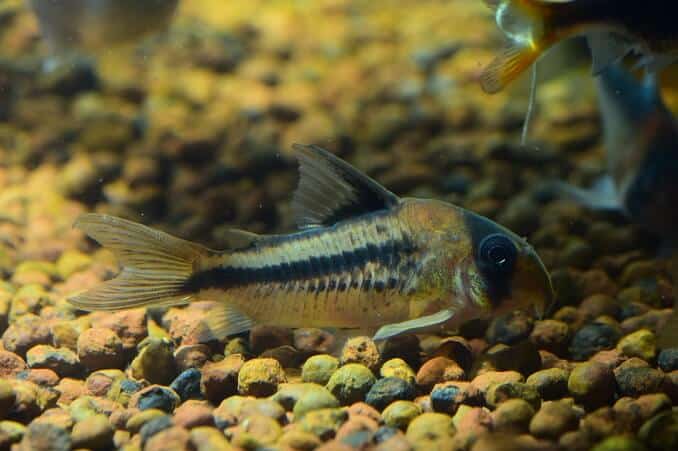
Also known as cory cats, corydoras catfish are a staple in most freshwater tanks. They’re easy to care for, peaceful, yet active bottom dwellers.
Cory catfish are very social, and while you can keep them individually, they thrive if kept in a group of two or more.
They get along well with most community tank fish as long as these tank mates are not aggressive.
Corydoras catfish grow up to 2.5 inches in length and are excellent tank cleaners. These fish will pick up leftover foods from the gravel, but they also require other foods such as flakes and bottom feeder tablets.
Goldfish

When most people think of goldfish, they think of small fishbowls with a fish that was won at the fair. This is not the correct way to house goldfish.
Few people know that goldfish can actually grow up to 14 inches long in the wild.
The minimum tank size for a goldfish is 20 gallons. You’ll also need to install a filter and perform 10–15% water changes weekly.
There are many different varieties of goldfish, and you can mix these varieties as long as they aren’t breeds that would compete with each other for food. For example, keep single-tailed varieties together and normal-eyed goldfish together.
Angelfish
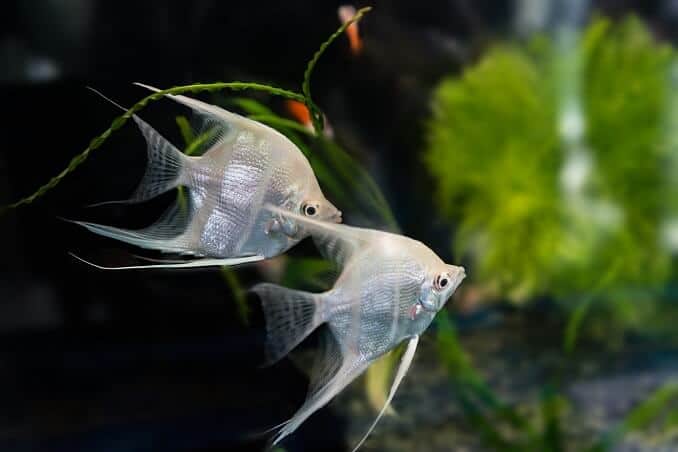
Angelfish are members of the Cichlidae family, which includes several other fish species that are popular with aquarium keepers, such as discus fish, oscars, and parrotfish.
Angelfish can grow up to 6 inches in length and 8 inches tall, and come in a variety of colors and patterns.
These fish are omnivorous, so they’ll need a balanced diet of meat and plant food. There are many different types of angelfish.
Angelfish tanks should be at least 20 gallons, and the water should be soft and acidic.
As these fish mature, they can become aggressive, especially if your tank is overcrowded. However, in general, angelfish are good community fish. Just don’t keep them with very small fish or fin-nipping species.
Summary
Freshwater fish come in a huge variety of shapes, colors, and sizes. The most popular fish are usually bright, colorful, and easy to care for.
If you’re new to fishkeeping, we recommend starting slowing and adding just a few fish at a time. Slowly adding fish to your tank over time will give you chance to get to know and understand how to care for each species of fish before you add another.
Make sure you always research the species you want to buy to ensure you can give them the time and care that they require. This article should only serve as an example of the popular types of freshwater fish, rather than a guide on how to care for each one. For more thorough care guides, check out some of our individual species profiles.
Do you already keep fish, or are you just starting out? Which one would you say is the most popular species?

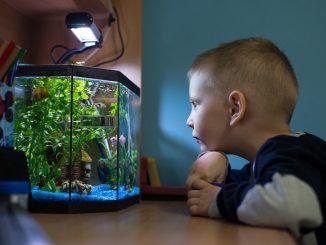
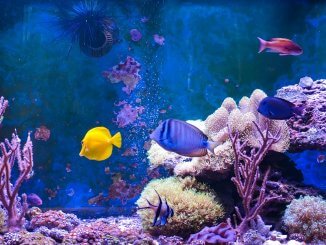
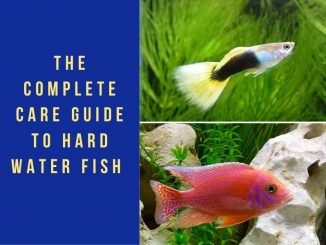
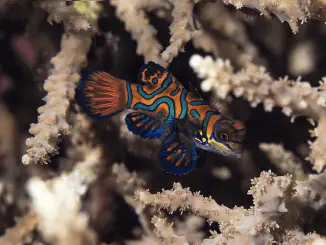
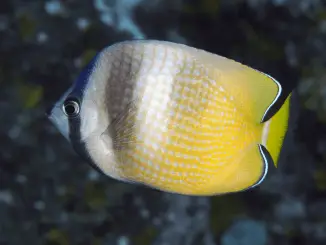
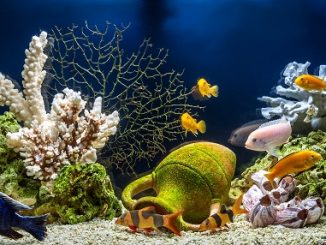
I found your information very helpful in deciding what kind of tropical fish I want to get for my tank. Thank you!
Hi Janet, I’m glad it was useful! Thanks, Robert
thanks for all your help as being new to keeping fish it was great
I’m being given a mature glass fish. I have guppy’s,Cory’s, platys,and a beta in a 50 gal tank. Plenty of live plants no crustations
thank you for your informative posts.
my Gourami is acting off he is staying in the corner with his nose up and not eating very good he is big but do not know his age
Does anyone know why my betta stays on the ground? I’m worried about him, he doesn’t go to the surface anymore right now he’s staying very still, I think he might die soon
A great article. I had a pleco which grew from 10 cm to 1 foot.I had no idea this was possible, had it for 7 long years before donating as my fish tank was not big enough. It is great to know that it will live 20 years ?.
Are there any fish that aren’t compatible together in one fish tank cause I would like to have multiple spices of fish in my tank so it looks even more colorful…
Hi Anastasija, not all fish are compatible by any means. Some are aggressive, some are too shy, some are fin nippers. There are a whole host of reasons why you need to research each individual species to see if they are compatible. Thanks, Robert
I have been keeping fish for ten years and over that time I have acquired a lot of knowledge about the hobby. If I could tell people one thing, please do not treat fish like throw away animals. They are living breathing beings. Do not give in to a kid whining about getting a fish unless you do your research. I choose to ignore the sales person who told me a pleco would grow to be two feet long and at 12 inches had to re-home mine. I made so many mistakes but I will tell you the most important things that I have learned over the years. Do not overfeed and do not overstock. The rule is 1 inch of full grown fish for every gallon of water. I would say it’s better to do 1 inch fish for every 2 gallons. Your fish will thank you for it!
Hi Shawn, Thanks for sharing your experience with us! Much appreciated, Robert
Hi Shawn , thanks for some of your fish keeping knowledge. You pointed out something that needed to be addressed and that is about fish being living breathing creatures. I believe in that and I’m very observant to my fish in all my aquariums.
Loved this article. I wish I had a fish tank. I did when I was a young girl and we just loved our fish. Our angelfish grew quite huge and aggressive so we put it in with our really big goldfish tank. We had a 20 gallon tank for the 3 goldfish and the big angelfish. They all did very well for many years.
Hi, what a good article, thank you
One question, do you recommend a particular tank vacum cleaner and how often do you recommend hoovering a 20 gallon tank?
I’ve just set up my tank after many years. I have a 60 gallon tank that has been cycling for 2 weeks. I’ve added plants last weekend, and plan to get a few fish over the coming weekend. This list was very helpful for creating a shortlist, thank you ??
Some of these guys LOVE to jump; especially at night. Cover suggested to avoid losing favorites.?
This is an awesome post. Just put a 3g next to my bed for the glow and Ambiance. Thanks for the ideas!
I know people put bottom feeders in their tanks as well to help with cleaning, but are there any limitations of which bottom feeders should go with the other fish in the tank?
Hi – Can goldfish go in a heated tank with say neons, guppys and a beta?
Hi All,
I am having my first aquarium and really exited. It’s 198 imperial gallons, I would like large and medium colourful fish any advice, was thinking angel fish and discus any other advice?